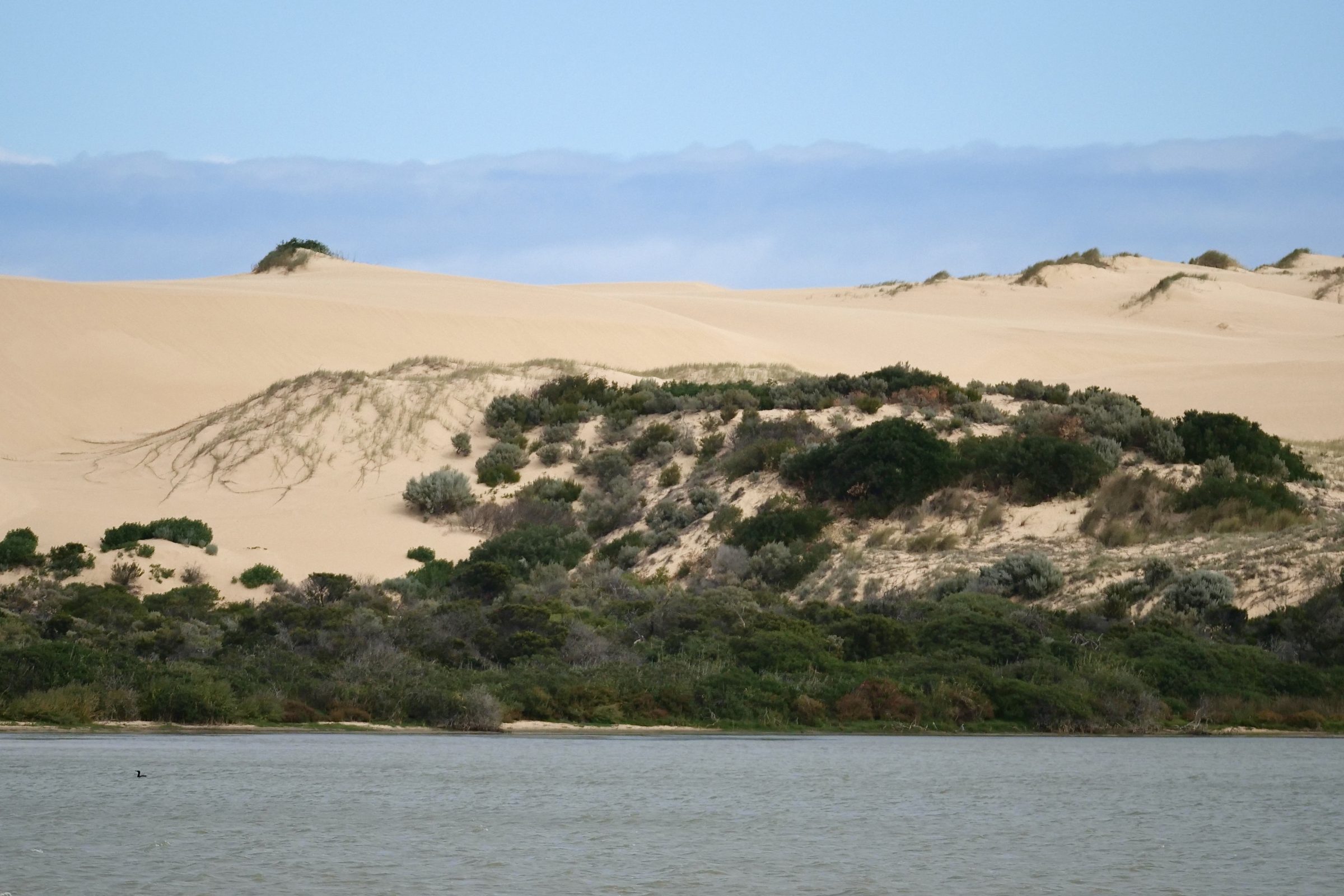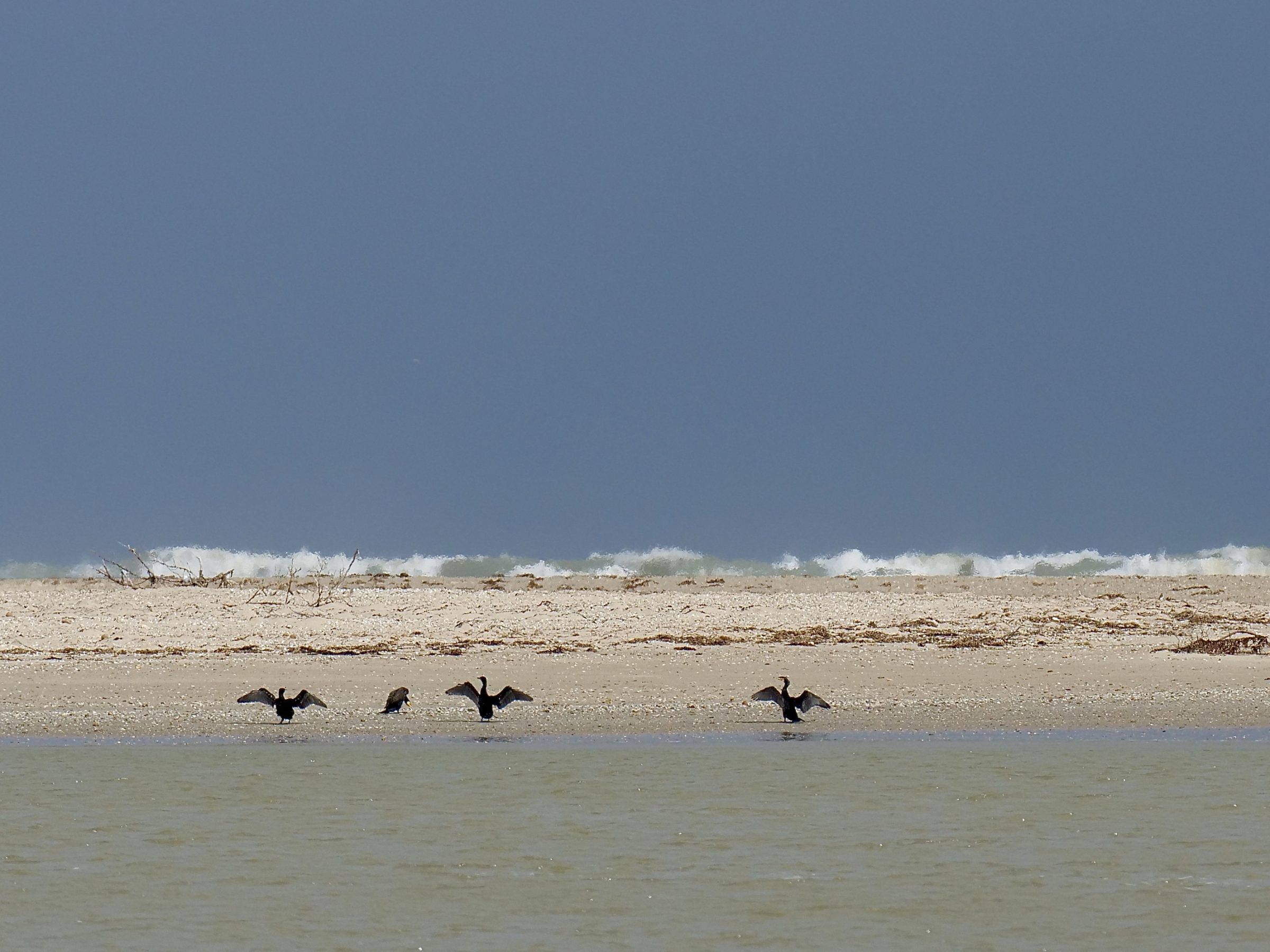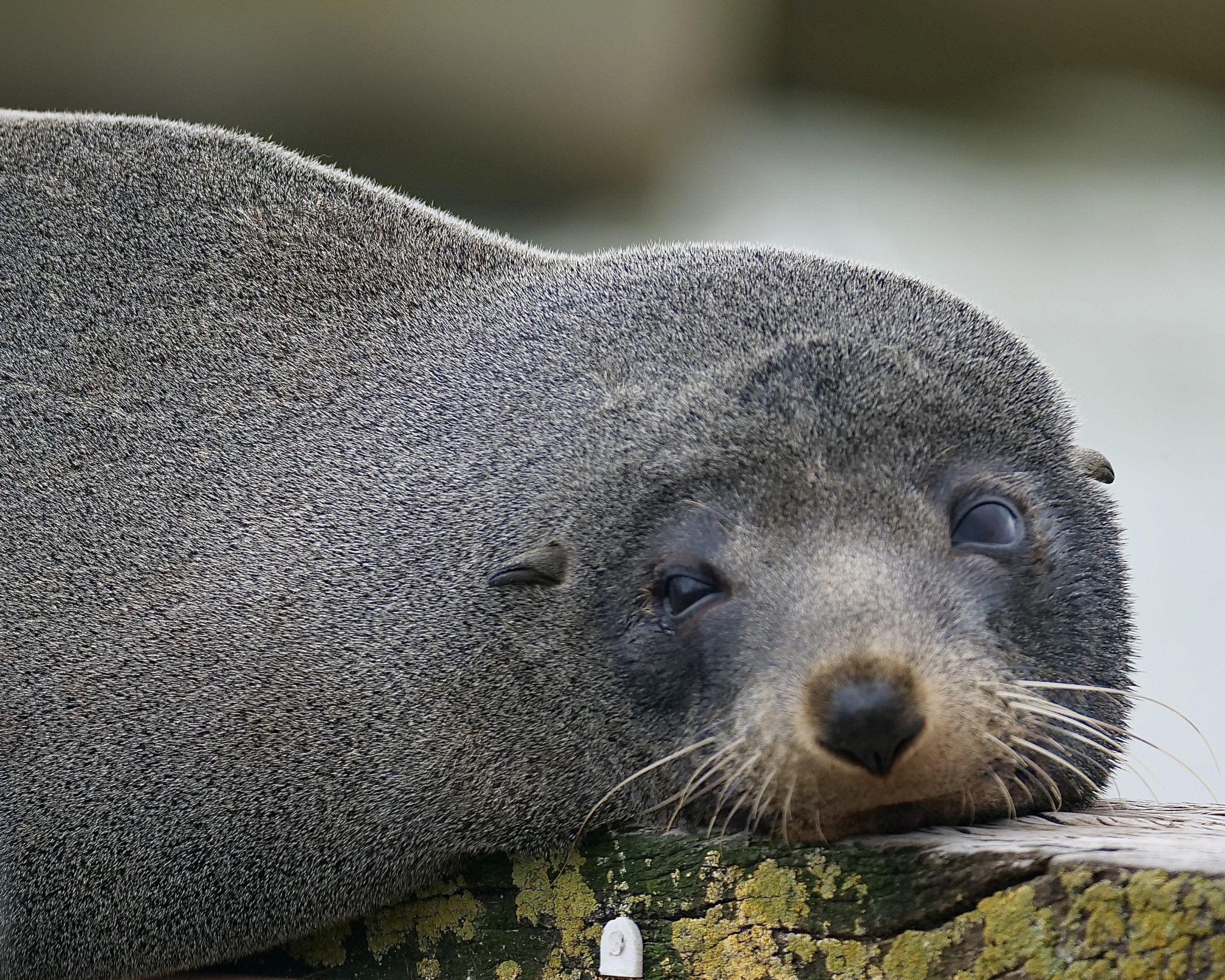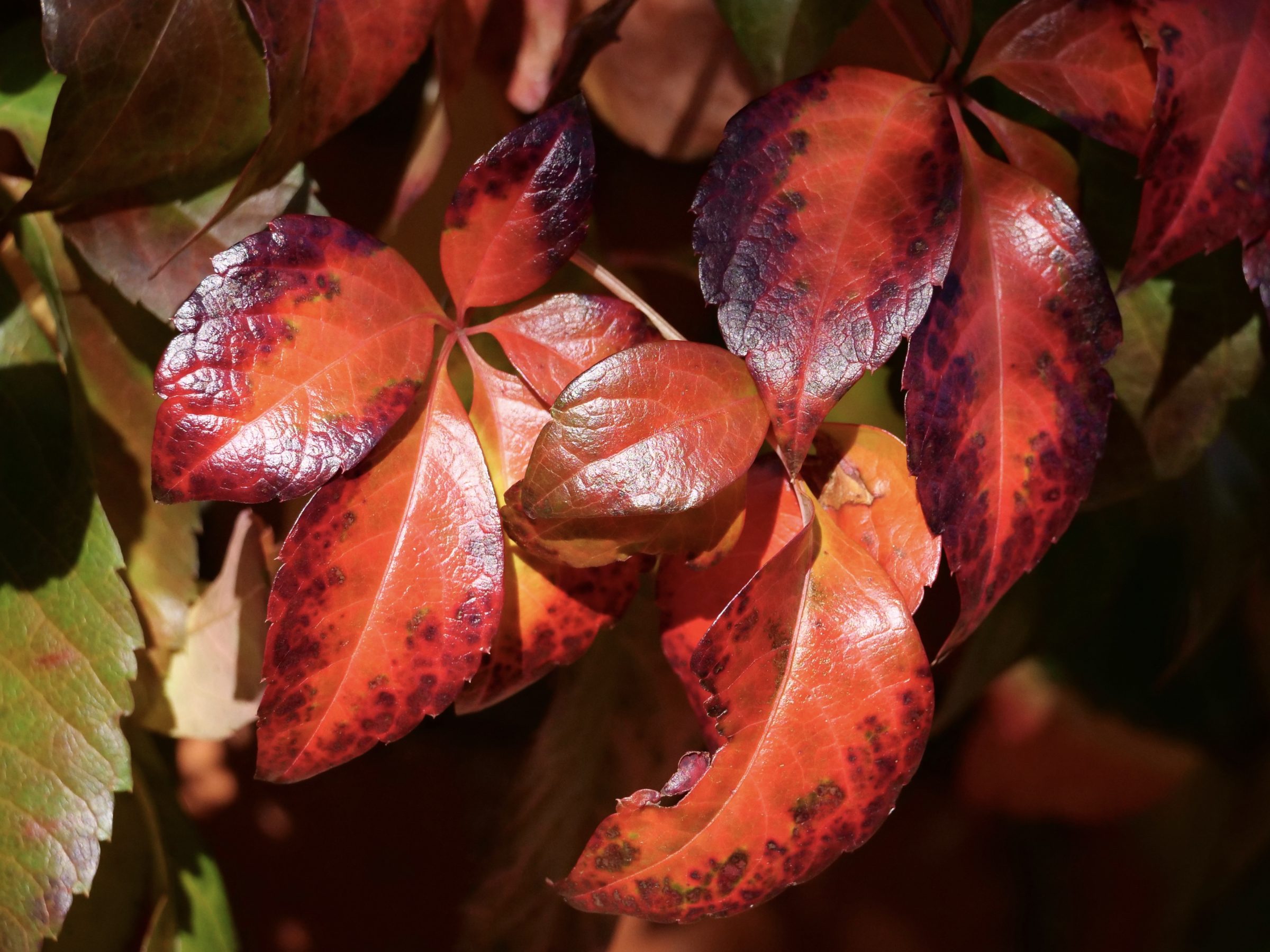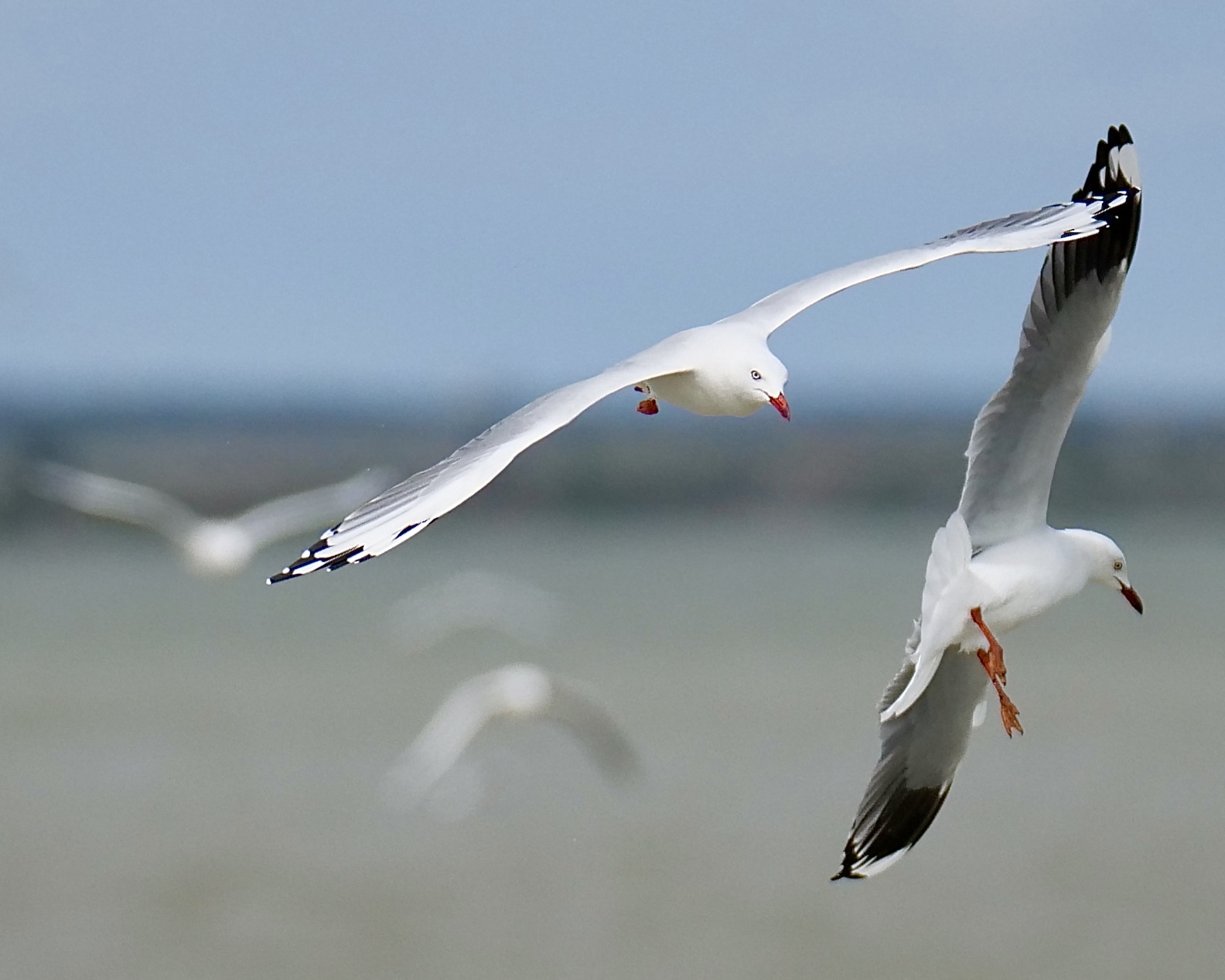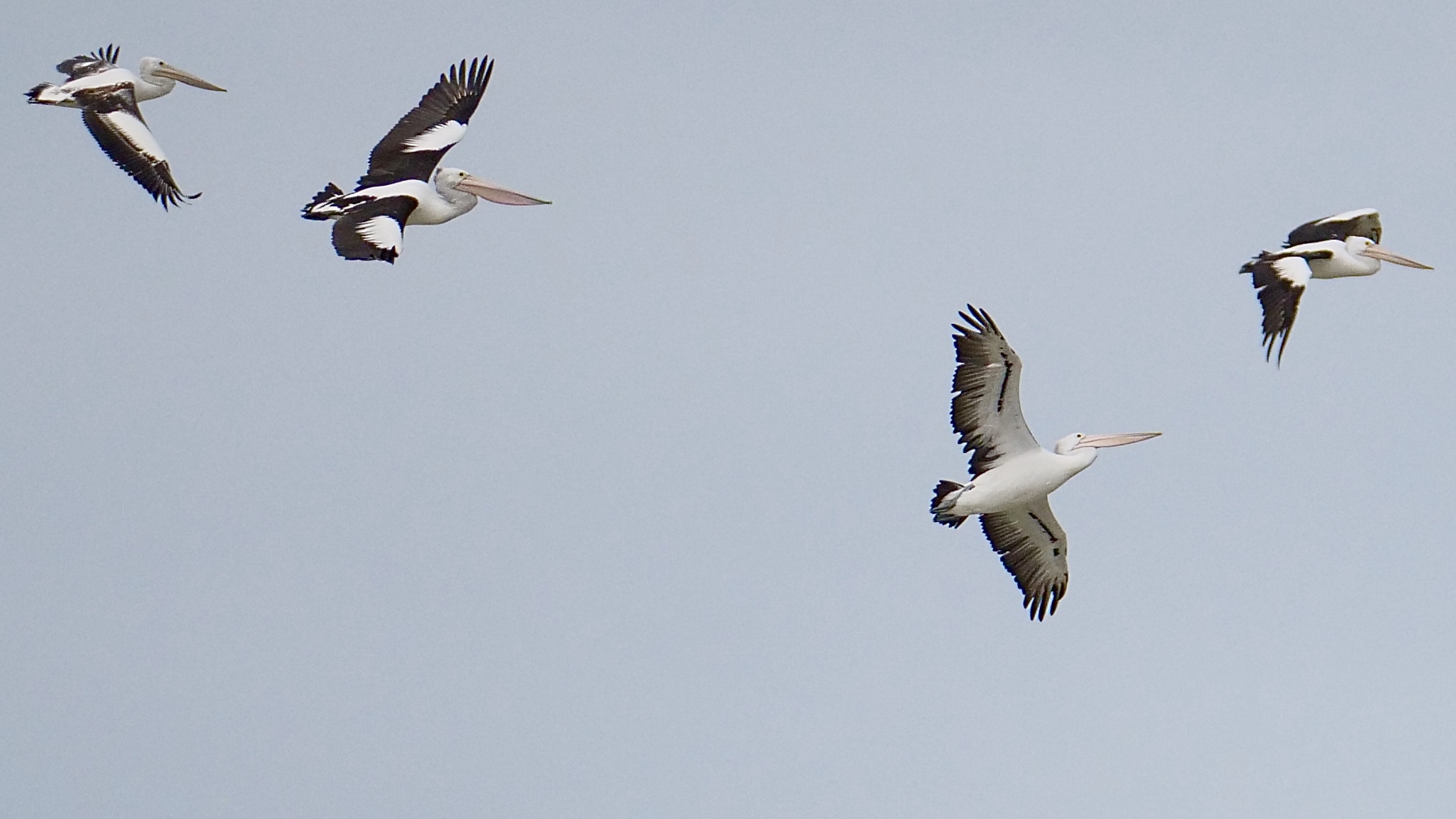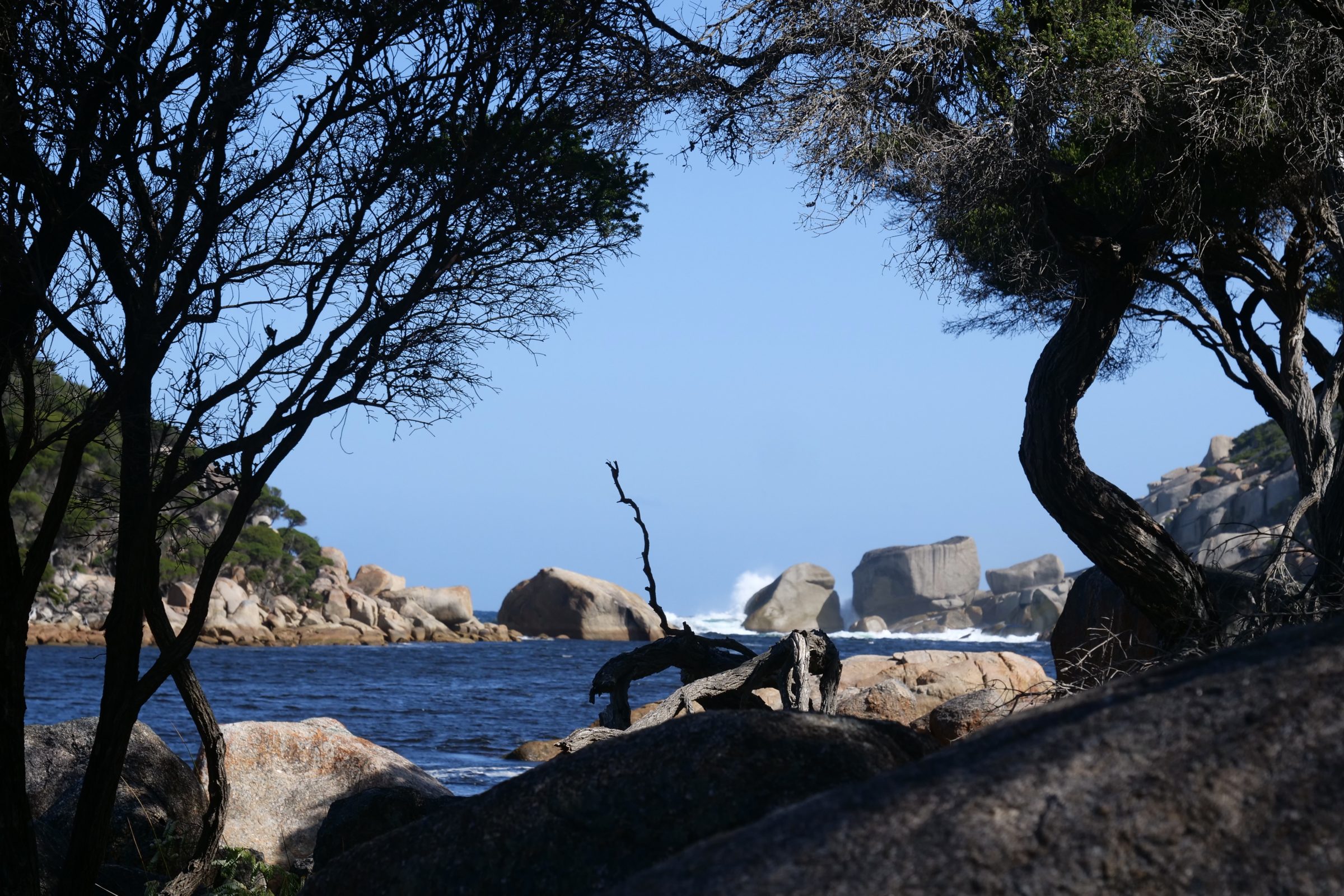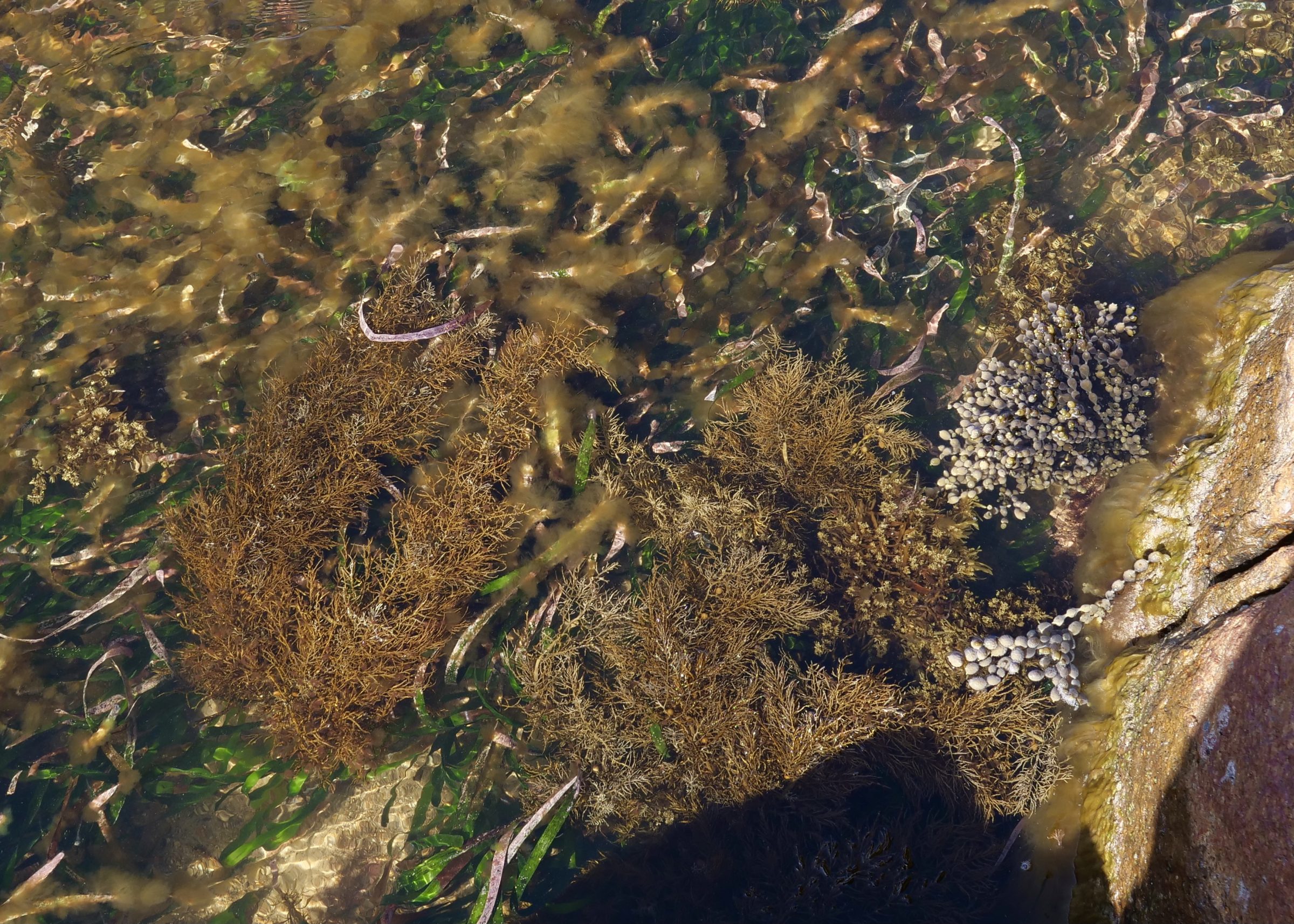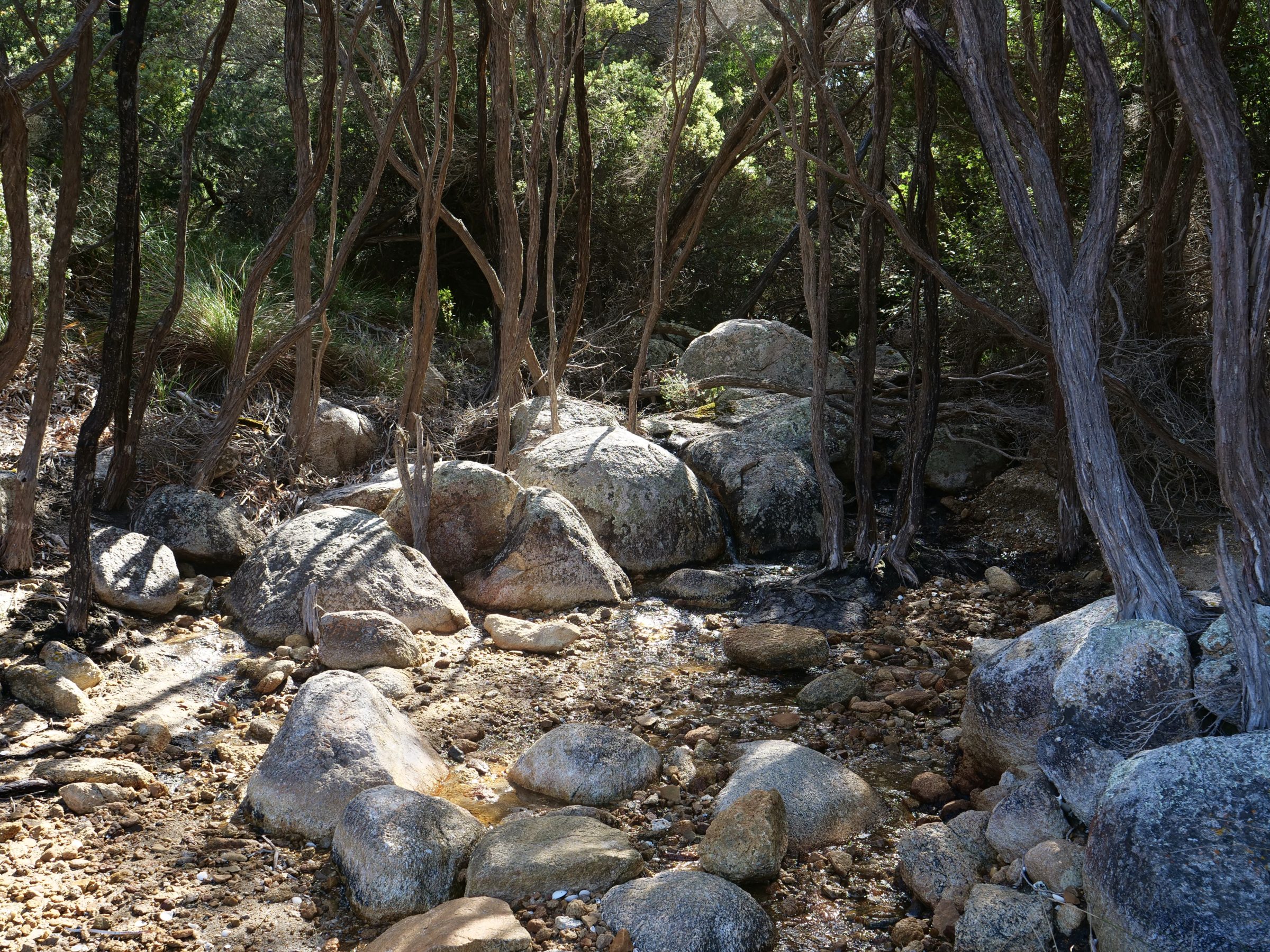The featured image and the one below were both taken from a boat on the Coorong-proper – Australia’s longest lagoon.
Both photos look across its waters to the Younghusband Peninsula – the dune field that separates the Coorong from the Southern Ocean.
Sand and water are the Coorong National Park’s key components.
The former arrives via wind, and Southern Ocean waves.
Most of the “fresh”-ish supply of the latter is delivered by the Murray-Darling river system.
One Comment